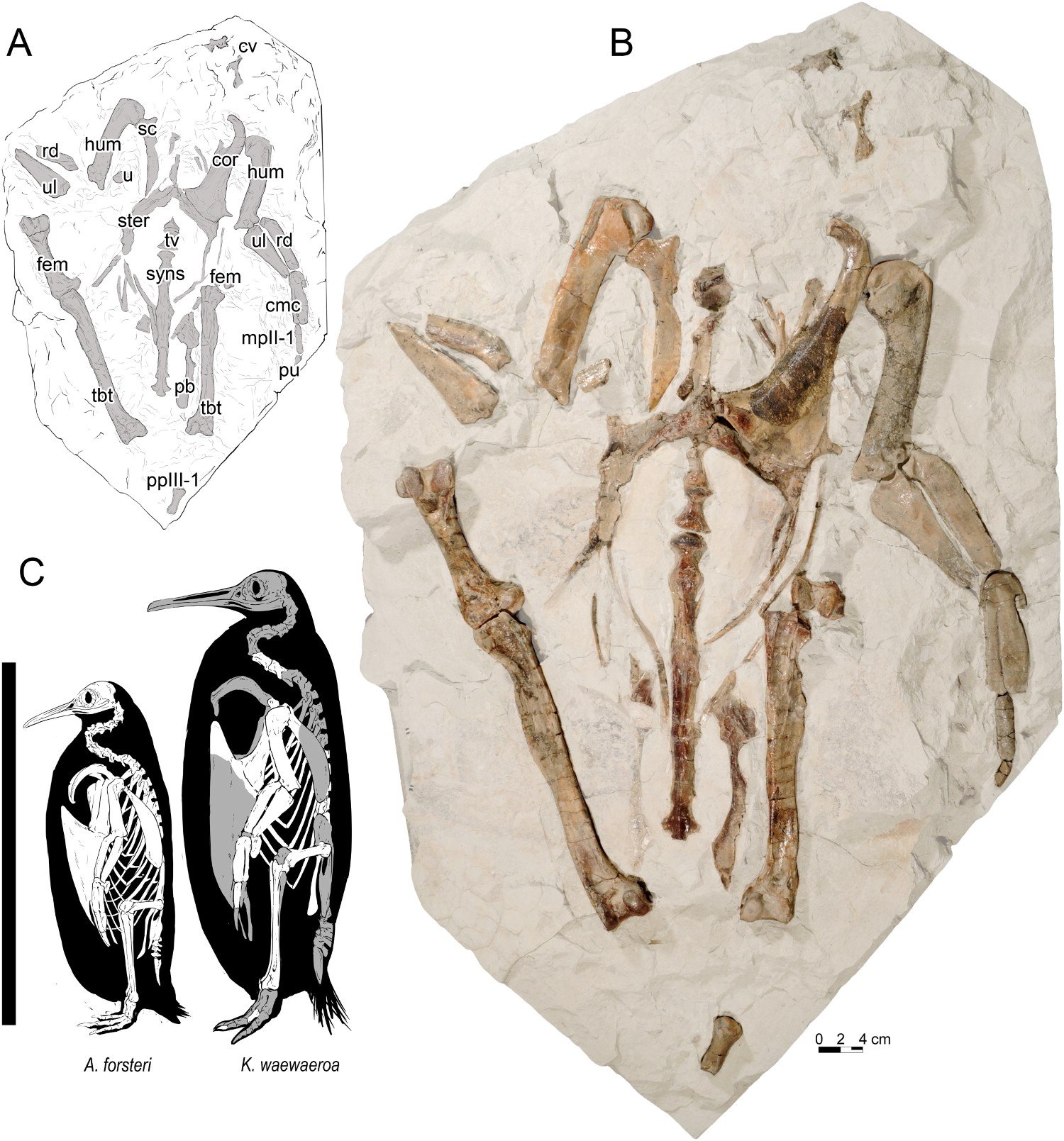
When some curious summer campers at the Hamilton Junior Naturalist Club (Junats) set out on an expedition to Kawhia Harbour on New Zealand's North Island, they were just hoping to find some small crustacean fossils. Instead, they discovered a well-preserved skeleton of a new species of a giant penguin that inhabited the area between 27 to 30 million years ago.
The chain of events leading to the amazing discovery dates back to January 2006. Accompanied by Junats fossil expert Chris Templer, the group — aged 10 to 18 — was well into their trek along the majestic harbor when they spotted what looked like an old propeller. However, a closer examination revealed a perfectly preserved penguin skeleton embedded in a block of hardened sandstone. "We were looking for fossil sea urchins, and what we found was a penguin – what a bonus!" Templer told the Waikato Museum.
After ensuring it was legal to unearth, the group returned to extract their amazing discovery. The fossil remained at the Junats' Te Kauri Lodge Museum until 2017 when it was donated to the Waikato Museum in Hamilton. This gave the research team led by Simone Giovanardi, a Ph.D. student at New Zealand's Massey University, a chance to closely examine what turned out to be one of the most complete skeletons of a giant penguin ever found.

The team created a digital model of the giant penguin using 3-D scanning techniques and compared it to previously found fossils. They discovered that the skeleton was similar to the Kairuku — an extinct giant penguin genus that roamed New Zealand's South Island more than 25 million years ago. However, its unusually long beak and legs led them to conclude that the bones belonged to a new member of the group.
The first North Island representative of the Kairuku genus has fittingly been named Kairuku waewaeroa — "long legs" in Māori, the language spoken by New Zealand's indigenous population. The scientists estimate the massive diving bird was about 4.5 feet (1.4 meters) tall, or about as tall as a 10-year-old child. In comparison, the world's tallest living penguin species — the Emperor Penguin — stands around 3.2 feet (1 meter) tall.
The scientists, who published their findings in the Journal of Vertebrate Paleontology on September 16, 2021, say the discovery is helping fill in a void in the penguin species' history — their fossil records date as far back as the age of dinosaurs.
Steffan Safey, who was just 13 when he and his friends found the fossil back in 2006, is delighted by the new revelation. "It's sort of surreal to know that a discovery we made as kids so many years ago is contributing to academia today. And it's a new species, even!" he said in a statement. "The existence of giant penguins in New Zealand is scarcely known, so it's really great to know that the community is continuing to study and learn more about them. Clearly, the day spent cutting it out of the sandstone was well spent!"
Resources: TheGuardian.com, NPR.com, Euronews.com, eurekalert.org
